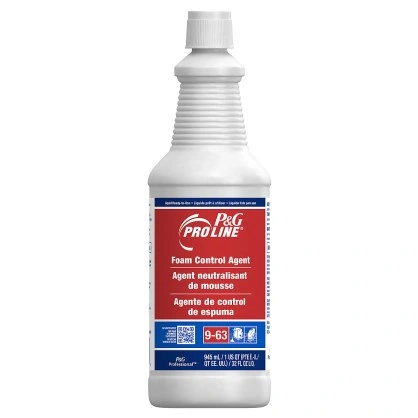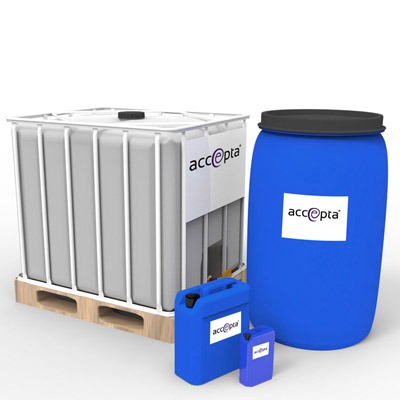A Comprehensive Guide to Applying Foam Control Solutions in Your Operations
Reliable foam control is a critical facet of functional effectiveness that often goes ignored. Comprehending the complexities of foam generation can considerably impact both efficiency and product quality. By checking out vital factors such as application compatibility and personnel training, companies can enhance their foam monitoring efforts.
Understanding Foam Difficulties
Foam challenges are a significant worry across numerous industries, influencing operational efficiency and item quality. The formation of extreme foam can prevent processes such as blending, transport, and storage space, bring about enhanced downtime and waste. In markets like food and beverage, drugs, and petrochemicals, foam can disrupt production lines, creating product incongruities and contamination threats.
Furthermore, foam can block equipment capability, leading to expensive repair work and maintenance. As an example, in wastewater therapy, foam can interrupt clarifier operations, resulting in lower treatment efficiency and regulative conformity problems.
Recognizing the underlying reasons for foam generation is essential for effective administration. Aspects such as surfactants, temperature changes, and frustration levels can all add to foam production. Recognizing these aspects allows markets to carry out targeted strategies that minimize foam formation while keeping item honesty.
Kinds of Foam Control Solutions

Mechanical options include the usage of tools such as foam skimmers or defoamers. These tools physically eliminate foam from the surface of liquids, consequently preventing overflow and maintaining ideal degrees in tanks and reactors. Chemical remedies, on the various other hand, consist of the application of defoaming representatives-- compounds that disrupt the foam framework, causing its collapse. These representatives can be silicone-based, organic, or aqueous, each offering unique benefits depending on the application atmosphere.
Last but not least, operational techniques concentrate on process modifications. This might include customizing devices criteria, such as temperature level and stress, or changing the circulation rates of liquids to reduce foam generation. In addition, executing excellent housekeeping practices can also minimize foam development by minimizing impurities that contribute to foam stability.
Picking the appropriate foam control service involves examining the specific requirements of the procedure, consisting of the type of procedure, the features of the materials entailed, and safety considerations.
Picking the Right Products
Picking the best foam control items requires a complete understanding of the certain application and its distinct difficulties. Aspects such as the kind of foam, the atmosphere in which it happens, and the wanted result all play critical functions in item option. Foam Control. In industries such as food handling, it is critical to choose food-grade defoamers that conform with safety guidelines while successfully managing foam.
Furthermore, consider the viscosity of the fluid where the foam trouble exists. Some products are formulated for low-viscosity applications, while others are tailored for thicker fluids. Compatibility with existing procedures is an additional critical aspect; the picked foam control representatives need to integrate effortlessly without disrupting total procedures.
Another critical variable is the method of application. Some products might need dilution, while others can be used directly. Analyzing the ease of use and the needed dosage can provide understandings right into the item's efficiency and cost-effectiveness.
Execution Techniques
Successful application methods for foam control solutions require an organized approach that straightens item option with functional demands. The initial action involves a complete analysis of the processes where foam occurs, determining details areas that necessitate intervention. By engaging cross-functional teams, webpage including production, high quality, and engineering guarantee, organizations can gather understandings that inform the selection of the most efficient foam control products.
Following, it is important to develop clear goals for foam reduction, guaranteeing that these goals are possible and measurable. This weblink might include defining acceptable foam degrees and the timelines for application. Educating workers on the residential properties and application methods of chosen foam control representatives is similarly vital, as correct usage is crucial for ideal results.
Additionally, integrating foam control solutions right into existing operations calls for mindful preparation. Organizations ought to create a phased implementation plan, enabling adjustments based on preliminary results. Normal communication and feedback loopholes with personnel associated with the procedure will promote timely analytical and foster a culture of constant renovation. Ultimately, a well-structured technique will certainly enhance functional effectiveness while successfully managing foam-related obstacles.
Tracking and Assessing Performance
Monitoring and assessing the performance of foam control solutions is crucial for making certain that applied strategies yield the desired outcomes. This procedure involves organized information collection and evaluation to analyze the performance of foam control representatives and methods. Trick efficiency indications (KPIs) must be developed before application, enabling a clear standard against which to determine development.

Assessing efficiency likewise needs regular testimonials of foam control treatments and agent efficiency. This can be achieved via tasting and screening, enabling drivers to identify if existing solutions are meeting operational demands. It is important to obtain comments from team participants who engage with these systems daily, as their insights can reveal functional nuances that measurable data might neglect.

Eventually, an organized monitoring and analysis structure helps identify needed changes, making certain that foam control remedies remain efficient, inexpensive, and aligned with business objectives.
Conclusion
Finally, reliable foam control services are vital for maximizing operational performance and keeping product top quality. A complete understanding of foam obstacles, combined with the option of appropriate products and implementation strategies, promotes the effective administration of foam generation. Spending and developing quantifiable kpis in employees educating further enhance the efficiency of foam control actions. Normal monitoring and evaluation make certain continual renovation, ultimately causing a more effective and streamlined functional setting.
Applying excellent housekeeping practices can likewise reduce foam formation by reducing contaminants that add to foam security.
Picking read the full info here the best foam control products requires a detailed understanding of the details application and its special challenges (Foam Control).Successful application strategies for foam control solutions need a systematic strategy that straightens item selection with functional needs.In conclusion, efficient foam control services are necessary for enhancing operational effectiveness and maintaining product high quality. A thorough understanding of foam challenges, combined with the selection of ideal items and implementation techniques, assists in the successful monitoring of foam generation